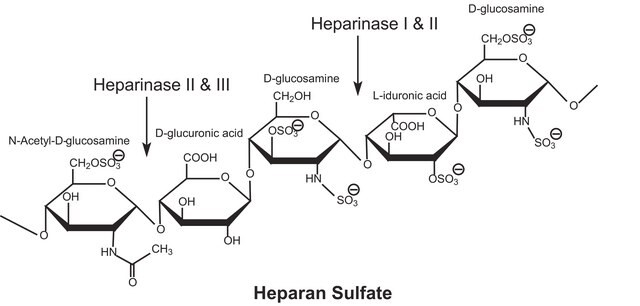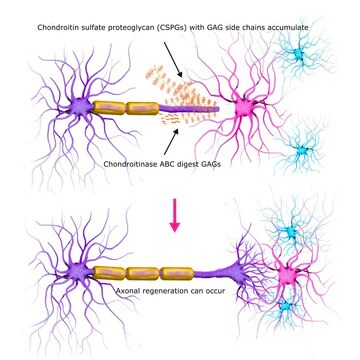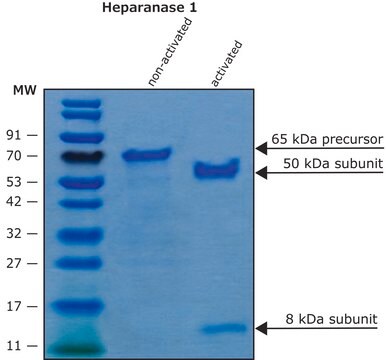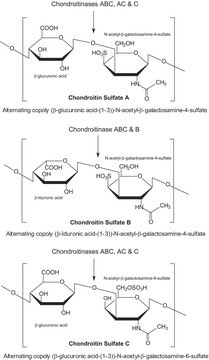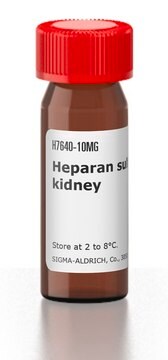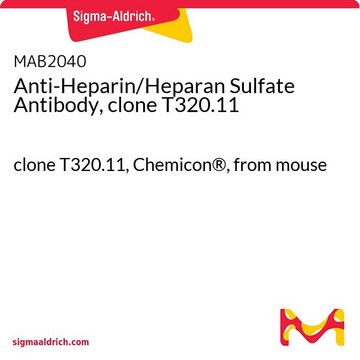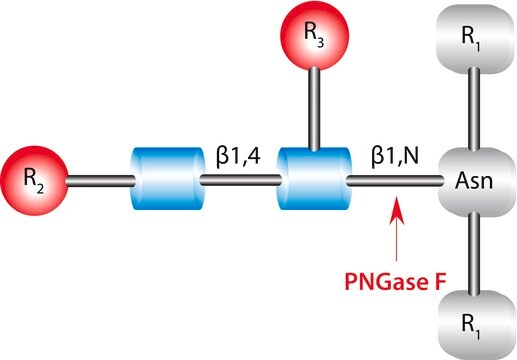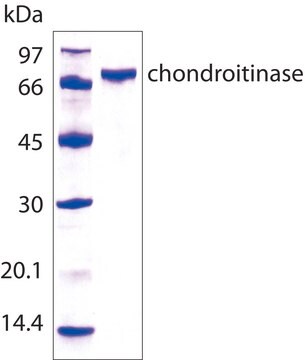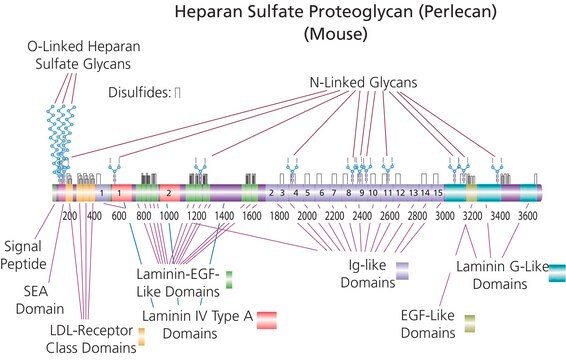H3917
Heparinase I and III Blend from Flavobacterium heparinum
lyophilized powder, stabilized with ∼ 25% (w/w) bovine serum albumin, ≥200 unit/mg protein (enzyme + BSA)
Synonyme(s) :
Heparinase I and Heparinase III blend
About This Item
Produits recommandés
Source biologique
bacterial (Flavobacterium heparinum)
Niveau de qualité
Conjugué
conjugate (Glucosaminoglycan)
Forme
lyophilized powder
Activité spécifique
≥200 units/mg protein
Concentration
≥200 unit/mg protein (enzyme + BSA)
Conditions d'expédition
dry ice
Température de stockage
−20°C
Description générale
Application
- the digestion of heparan sulfate from ovine vitreous
- human embryonic kidney cells
- glycosaminoglycans from arterial tissues
- P0 retinae digestion
Actions biochimiques/physiologiques
Conditionnement
Définition de l'unité
One unit will form 0.1 micromole of unsaturated uronic acid per hour at 7.5 at 25 degrees C using bovine kidney Heparan, Sulfate as substrate for heparinase III.
One unit will form 0.1 μmole of unsaturated uronic acid per hr at pH 7.5 at 25 °C. One International Unit (I.U.) is equivalent to approx. 600 Sigma units. Package sizes are sold in Sigma units.
Autres remarques
Code de la classe de stockage
13 - Non Combustible Solids
Classe de danger pour l'eau (WGK)
WGK 3
Point d'éclair (°F)
Not applicable
Point d'éclair (°C)
Not applicable
Certificats d'analyse (COA)
Recherchez un Certificats d'analyse (COA) en saisissant le numéro de lot du produit. Les numéros de lot figurent sur l'étiquette du produit après les mots "Lot" ou "Batch".
Déjà en possession de ce produit ?
Retrouvez la documentation relative aux produits que vous avez récemment achetés dans la Bibliothèque de documents.
Les clients ont également consulté
Notre équipe de scientifiques dispose d'une expérience dans tous les secteurs de la recherche, notamment en sciences de la vie, science des matériaux, synthèse chimique, chromatographie, analyse et dans de nombreux autres domaines..
Contacter notre Service technique